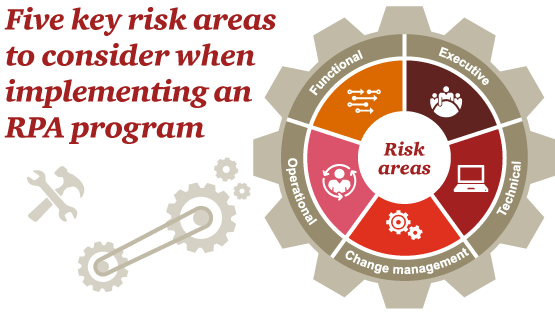Robotic Process Automation (RPA): A primer for internal audit professionals
RPA: Opportunity and responsibility for internal audit
PwC estimates that 45% of workforce tasks can be automated, which could save an estimated $2 trillion in global workforce costs. Software robots are easy to configure and do not require extensive IT knowledge. By deploying these, organizations can use RPA to automate manual tasks, such as copy and pasting data between applications or reconciling and cross-referencing data.
For internal audit, RPA presents both opportunity and responsibility. By helping the organization understand and control RPA risks and identifying opportunities to embrace RPA within their own organization, internal audit can position themselves as trusted advisors.
RPA can help internal audit increase productivity, expand its risk coverage and help address the ongoing compliance burden by doing more with less.

Understanding how an organization is using RPA and its impact to its risk profile is crucial for internal audit professionals
Establishing governance of RPA and relevant controls up-front can help effectively mitigate risks. By embedding governance, risk management and controls into the enterprise’s mobilization and deployment of RPA, organizations can catch issues before they arise.
Getting it right from the start is far more effective and cost efficient than cobbling together a patchwork of policies and controls later.
Internal audit’s early involvement in an RPA initiative ensures a balanced discussion, risk assessment and agreement on the overall governance framework and process design.
Contact us






© 2017 - 2026 PwC. All rights reserved. PwC refers to the PwC network and/or one or more of its member firms, each of which is a separate legal entity. Please see www.pwc.com/structure for further details.




